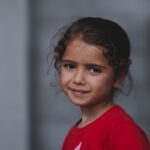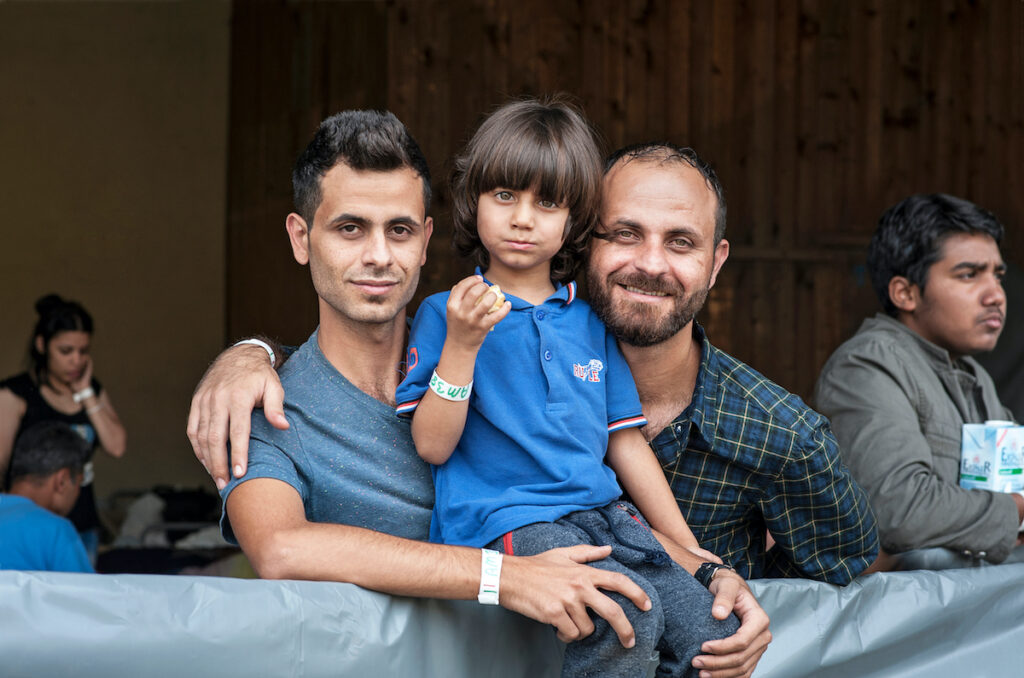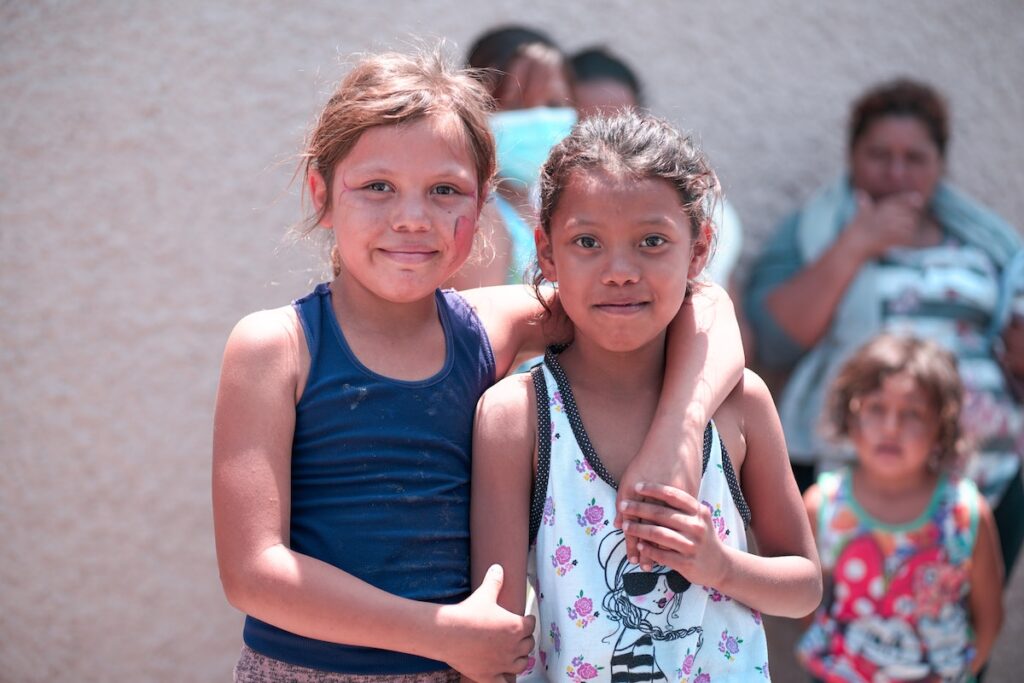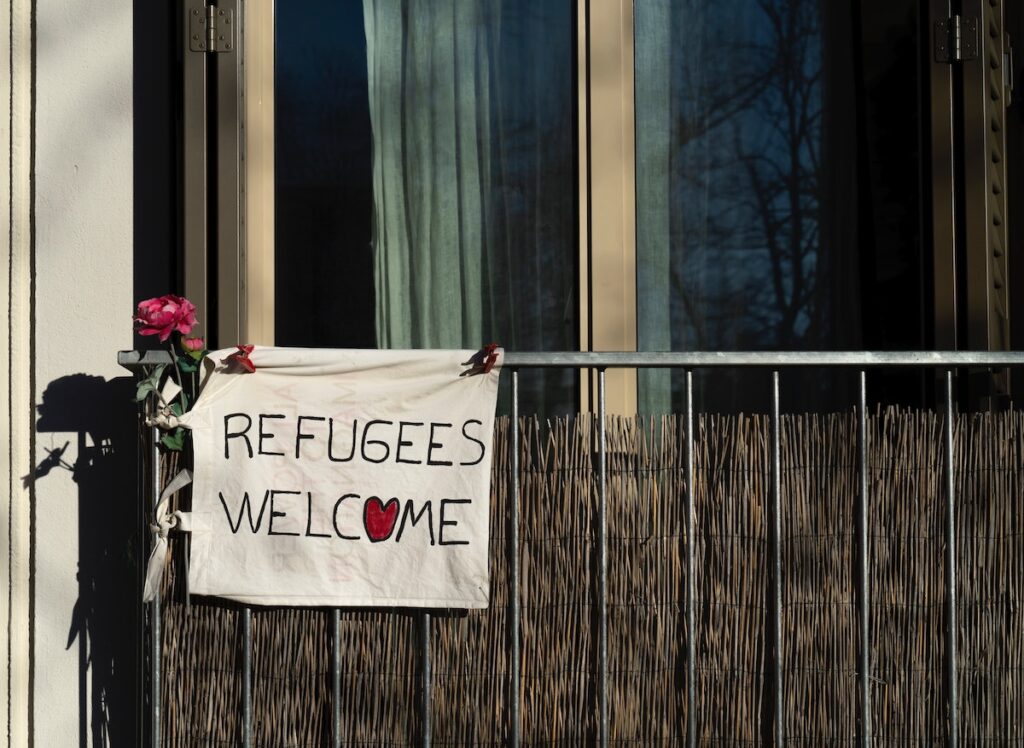
There are more than 79.5 million displaced people worldwide, of which 26 million are refugees (United Nations High Commissioner for Refugees, 2020). The mental health effects of exposure to war-related trauma among refugees are evident: the prevalence of PTSD and major depression range from 9% to 30% and 5% to 31%, respectively (Fazel et al., 2005, Steel et al., 2009).
Although early research mainly focused on the effects of trauma on refugees, current research also explores the adverse effects in children of trauma-exposed refugees (Leen-Feldner et al., 2013). Intergenerational trauma transmission describes how trauma exposure impacts later generations (Dekel and Goldblatt, 2008). Considering that parenting functioning and social environment can affect the relationship between parental psychopathology and child functioning (Daud et al., 2008; Goodman et al., 2020), recent reviews explored the mechanisms involved in trauma transmission between refugee parents and their non-exposed children. Their findings demonstrated how family interactions, dysfunction, parenting, and insecure attachment could negatively affect children (Sangalang et al., 2017; Flanagan et al., 2020).
Kelstrup and Carlsson’s (2022) review investigated the risk and protective factors for adverse mental health outcomes to better understand the development of psychopathology and promote resilience in children of trauma-affected refugees.

Research has investigated the effects of trauma on refugees; however, this review explores risk and protective factors for mental distress in the children of refugees.
Methods
The following databases were used to identify relevant studies published in the past 40 years: PubMed, Embase and PsycINFO.
Inclusion criteria for studies:
- Families consisting of a parent-child dyad, where the parent was either a refugee or asylum seeker who had experienced trauma
- Children aged 0-18 years, where most of the sample of children were born in the host country or arrived when they were aged two or below
- The paper had to report on factors linked to psychological distress in children
- Written in English, German, French, Spanish or a Scandinavian language.
The data were analysed qualitatively, as a quantitative analysis would not have been feasible given the high heterogeneity of the studies.
Results
Following the search of multiple databases, the researchers found four longitudinal, three comparative cross-sectional and five cross-sectional studies that met the inclusion criteria (overall 12 articles).
The authors identified five categories of risk/protective factors concerning adverse mental health outcomes in children of trauma-affected refugees. These are described in more depth below.
1. Parental mental health symptoms
Most studies demonstrated that parental mental illness is associated with mental distress in their children. More specifically, some studies found that PTSD, depression, and anxiety in refugee parents increased their children’s risk of developing mental illness.
2. Parenting
This category discussed how different parenting styles could either act as risk or protective factors regarding mental distress among children of trauma-affected refugees.
Regarding risk factors, some studies demonstrated that weaker family functioning was associated with mental distress among children. Furthermore, when parents do not disclose their trauma, this could lead to an insecure attachment style. Also, parents who demonstrated helplessness, imposed guilt, demanded attention, sought direction, or rejected their children, were associated with symptoms of depression and anxiety in their children.
In terms of protective factors, it was demonstrated that intra-family communication styles where parents openly discussed the trauma they experienced were associated with a secure attachment style in children. Also, challenging and nuturing their children and mother non-hostility was related to positive dyadic functioning.
3. Parental torture exposure
Some studies identified that having parents who were tortured was a risk factor for mental distress, for example, anxiety, depression, and PTSD. However, children whose parents were tortured and accessed treatment regarding this were less likely to have a psychiatric disorder.
4. Individual child characteristics
One study found that higher self-esteem in children of trauma-affected refugees is a protective factor against mental distress.
5. Social factors
It was identified that peer relations and family relations are potential protective factors against developing a psychiatric disorder in children of trauma-affected refugees. More specifically, children without PTSD symptoms were more likely to have high levels of family and peer support. However, it was recognised that mothers with lower educational attainment were a risk factor for mental distress in their children.

This review found that parental mental illness is associated with an increased risk of PTSD, depression, and anxiety amongst the children of trauma-affected refugees.
Conclusions
This study identified multiple risk and protective factors related to mental distress among children with trauma-affected refugee parent(s):
- Risk factors included parental mental illness symptoms and parents imposing guilt and demanding attention
- Whereas protective factors included parents disclosing the torture they had experienced and peer/family relational support.
These identified risk and protective factors can guide the development of future interventions to improve mental well-being among children of trauma-affected refugees.

Understanding risk and protective factors concerning mental illness among children of trauma-affected refugees can improve mental health services.
Strengths and limitations
The present study aimed to identify a broader range of risk and protective factors for adverse mental health outcomes in the non-exposed offspring of trauma-affected refugees. Compared to a most recent review exploring this intergenerational trauma transmission (Flanagan et al., 2020), the present study included more recent populations of refugees and their children and two more large samples of 35,000 and 19,000 children. Although many reviews can be undermined by publication bias favouring larger samples and significant results, many of the review’s studies had non-significant results. Furthermore, the authors reviewed studies written in multiple languages, including English, Spanish and Scandinavian languages, therefore increasing the generalisability of the findings as the review was not restricted to one or two languages.
However, there are also limitations present in this review. Throughout the methods section of the article, there was no mention of a risk of bias tool used to assess the individual studies. Using such assessment tools is important as it provides transparency regarding the quality of evidence. Since the authors did not mention this, it is difficult to weigh up the evidence against possible sources of bias. Furthermore, all twelve articles included in the present review were from Western host countries, demonstrating that existing research mainly focuses on refugees resettled in Western countries. Considering that experiences of refugee children can vary depending on where they migrate, i.e., a developing or developed country, it is likely that the identified factors would also differ between these countries.

This review is limited by the lack of studies included from non-Western countries, thus reducing the generalisability of the results obtained.
Implications for practice
Although the specific elements of effective interventions are hard to determine based on current evidence, there’s no question that mental health professionals should focus on improving parents’ mental health and parenting practices. Considering the particularly low uptake of mental health support among ethnic minorities (Bager et al., 2020), clinicians should aim to provide refugees with culturally adapted treatment, increasing treatment uptake. Along with adopting a curious and non-expert stance, therapists should put effort into developing awareness of relevant cultural issues, e.g., becoming more knowledgeable about matters related to culture, religion, and spirituality, considering the relevance and the accessibility of other organisations when signposting, and reflecting on the cultural context of cognitions and beliefs (Naeem et al., 2019). For instance, religious, spiritual, or cultural examples can make therapy more relevant.
Positive parenting practices support healthy child development, but hostile parenting is a potential stressor, so therapists should work with refugees who are parents to reinforce positive parenting practices and family functioning in line with a culturally adapted framework. Such support can take the format of structured parent training programmes facilitated by trained therapists. Parents can then be provided information around general psychoeducation on early childhood development, positive discipline, and the effects of toxic stress. Additionally, these programmes could encourage skills to practice through role-plays and peer-to-peer learning through collaborative group work (Lakkis et al., 2020; Sim et al., 2021). Such programmes must account for possible external factors influencing parenting abilities, such as language, socioeconomic and legal status.

Developers of interventions for children of trauma-affected refugees should prioritise improving parents’ mental health and parenting practices.
Statement of interests
We have no competing interests to declare.
Links
Primary paper
Kelstrup, L., & Carlsson, J. (2022). Trauma-affected refugees and their non-exposed children: a review of risk and protective factors for trauma transmission. Psychiatry Research, 114604.
Other references
Bager, L., Agerbo, E., Skipper, N., Høgh Thøgersen, M., & Laursen, T. M. (2020). Risk of psychiatric diagnoses in children and adolescents of parents with torture trauma and war trauma. Acta Psychiatrica Scandinavica, 142(4), 307-318.
Daud, A., af Klinteberg, B., & Rydelius, P. A. (2008). Resilience and vulnerability among refugee children of traumatized and non-traumatized parents. Child and Adolescent Psychiatry and Mental Health, 2(1), 1-11.
Dekel, R., & Goldblatt, H. (2008). Is there intergenerational transmission of trauma? The case of combat veterans’ children. American Journal of Orthopsychiatry, 78(3), 281-289.
Fazel, M., Wheeler, J., & Danesh, J. (2005). Prevalence of serious mental disorder in 7000 refugees resettled in western countries: a systematic review. The Lancet, 365(9467), 1309-1314.
Flanagan, N., Travers, A., Vallières, F., Hansen, M., Halpin, R., Sheaf, G., … & Johnsen, A. T. (2020). Crossing borders: A systematic review identifying potential mechanisms of intergenerational trauma transmission in asylum-seeking and refugee families. European Journal of Psychotraumatology, 11(1), 1790283.
Goodman, S. H., Simon, H. F., Shamblaw, A. L., & Kim, C. Y. (2020). Parenting as a mediator of associations between depression in mothers and children’s functioning: A systematic review and meta-analysis. Clinical Child and Family Psychology Review, 23(4), 427-460.
Lakkis, N. A., Osman, M. H., Aoude, L. C., Maalouf, C. J., Issa, H. G., & Issa, G. M. (2020). A pilot intervention to promote positive parenting in refugees from Syria in Lebanon and Jordan. Frontiers in Psychiatry, 11, 257.
Leen-Feldner, E. W., Feldner, M. T., Knapp, A., Bunaciu, L., Blumenthal, H., & Amstadter, A. B. (2013). Offspring psychological and biological correlates of parental posttraumatic stress: Review of the literature and research agenda. Clinical psychology review, 33(8), 1106-1133.
Naeem, F., Phiri, P., Rathod, S., & Ayub, M. (2019). Cultural adaptation of cognitive–behavioural therapy. BJPsych Advances, 25(6), 387-395.
Sangalang, C. C., Jager, J., & Harachi, T. W. (2017). Effects of maternal traumatic distress on family functioning and child mental health: An examination of Southeast Asian refugee families in the US. Social Science & Medicine, 184, 178-186.
Sim, A. L., Bowes, L., Maignant, S., Magber, S., & Gardner, F. (2021). Acceptability and preliminary outcomes of a parenting intervention for Syrian refugees. Research on Social Work Practice, 31(1), 14-25.
Steel, Z., Chey, T., Silove, D., Marnane, C., Bryant, R. A., & Van Ommeren, M. (2009). Association of torture and other potentially traumatic events with mental health outcomes among populations exposed to mass conflict and displacement: a systematic review and meta-analysis. Jama, 302(5), 537-549.
United Nations High Commissioner for Refugees, 2020. Global trends: Forced displacement in 2019. https://www.unhcr.org/statistics/unhcrstats/5ee200e37/unhcr-global-trends-2019.html
Photo credits
- Photo by Ricardo Gomez Angel on Unsplash
- Photo by Levi Meir Clancy on Unsplash
- Photo by Alin Andersen on Unsplash
- Photo by Barbara Zandoval on Unsplash
